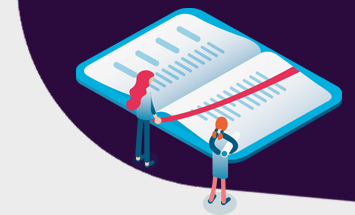Don’t Read the Manual, Speak to It: Revolutionizing Manuals with Language Models
Jonas Hultenius, Software Architecht at Sogeti and one of our global experts in SogetiLabs. In this blog post the topic is following: Language Models are changing technical manuals, offering interactive help tailored to users. With AI, manuals become conversational guides, making machinery easier to understand and operate.
For generations, decoding manuals can often feel like embarking on an arduous journey through a maze of technical jargon. Traditional manuals, laden with dense text and intricate diagrams, can be a barrier to understanding for both novices and seasoned technicians alike. However, a transformative wave is sweeping through the technical documentation landscape, promising to make manuals not only comprehensible but interactive—enter Language Models.
Technical manuals have long been a necessary but often overlooked component of operating and maintaining complex machinery and cheap children’s toys alike. Traditionally, these manuals consisted of static text and diagrams, requiring users to decipher and interpret the information provided. This approach, while informative, poses challenges, particularly for those who may not have a technical background.
In the before time, meaning just a couple of years back, they were mainly physical and, in some cases, depending on the product imposing in size and weight. Nowadays, they are readily found online, behind a vendor lock-in or freely on the web. Some still fall back to PDFs and other statical solutions while others, especially for complex products like machinery, use portals where the manufacturer can update the information over time. It’s better but not good enough. It’s just the same as before but with more steps. However, Language Models, powered by advanced Artificial Intelligence, have the potential to revolutionize the way we interact with technical manuals and break the classical cycle of physical things just getting digitalized. These models, such as ChatGPT, are trained on vast datasets and can comprehend natural language, enabling them to understand and respond to user queries.
Imagine a scenario where instead of poring over pages of a manual, you can simply ask the machine, “How do I calibrate the XYZ machine for optimal performance?” The language model processes the query, understands the context, and provides a clear and concise response, guiding the user through the calibration process in a conversational manner.
Before the current iteration of the AI cycle, this was simply a pipe dream but right now it is a tantalizing possibility that opens up a myriad of new use cases.
One of the most significant advantages of integrating Language Models into technical manuals is interactive troubleshooting. Users can describe an issue they are facing, and the model can diagnose the problem and suggest potential solutions. This interactive approach streamlines the troubleshooting process, making it more accessible to users with varying levels of technical expertise.
Language Models can adapt to users’ learning styles and preferences. By analyzing user interactions, the model can tailor its responses to provide information in a manner that resonates best with the individual. This adaptive learning capability ensures that users receive personalized guidance, enhancing their overall experience with the machinery. I can’t even change a lightbulb on my car being mechanically illiterate, but given the right kind of help, in my case a YouTube video, even I have managed in the past. A living manual that adopts to the user would help a great deal and would remove a lot of guesswork and haphazardly cobbled together quick fixes.
A language model can also adapt to something else, the obvious, languages. In a globalized world, where machinery is deployed in diverse regions, language can be a significant barrier. Language Models, however, can bridge this gap by providing multilingual support. Users can interact with the manual in their preferred language, breaking down linguistic barriers and ensuring that critical information is accessible to a wider audience.
While the integration of Language Models into technical manuals holds immense promise, it is not without challenges. Ensuring the accuracy of responses, addressing potential biases in language models, and safeguarding against misinterpretation are vital considerations. Additionally, providing a balance between machine-generated guidance and traditional manual elements is essential to maintaining user trust.
The end product must be better than whatever came before, and simply letting an LLM read a lot of manuals and call it a day is not going to cut it. Luckily, there are experts, and it’s not impossible; you just have to put some love and effort into it.
As advancements in AI continue, the future of technical manuals appears to be dynamic, interactive, and multimodal. The seamless integration of Language Models into manuals can potentially redefine how users approach and engage with complex systems. This shift from “reading” to “interacting” has the potential to democratize access to technical knowledge, empowering users across diverse backgrounds.
I think “Don’t Read the Manual, Speak to It” encapsulates the transformative potential of integrating Language Models into technical documentation. By harnessing the power of AI, we can create a future where understanding and operating complex machinery is not a laborious task but a conversational and intuitive experience.
As we navigate this paradigm shift, the synergy between human-machine interaction and advanced language understanding technologies will pave the way for a more accessible and user-friendly approach to technical manuals.
Please, reach out to me if you would like to discuss this further.
- Jonas HulteniusSoftware Architect & SogetiLabs Fellow, Sogeti Sweden
070-518 66 25
 Jonas HulteniusSoftware Architect & SogetiLabs Fellow, Sogeti Sweden
Jonas HulteniusSoftware Architect & SogetiLabs Fellow, Sogeti Sweden
070-518 66 25






